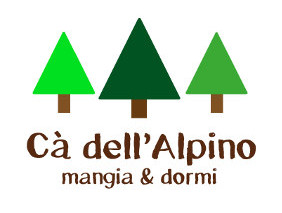Historic villages
In the areas surrounding Ca' dell'Alpino Bed & Breakfast there are plenty of old villages worth visiting for their cultural and historic heritage.
Lama Mocogno: The village is located in a privileged position among the valleys of the Scoltenna and Mocogno streams, overlooking Mount Cimone, in the proximity of important communications networks that link the mountain villages. Just before entering the village, you come across Ponte del Diavolo (Bridge of the Devil) also known as Ponte d’Ercole (Bridge of Hercules), a huge 33 m long rock, shaped as a bridge, surrounded by trees.
Fiumalbo: a very old mountain village with paved roads and stone buildings, some of which still have slate roofs. Its Church of Saint Bartholomew dates back to the 1200s, and the Oratories of St. Rocco, dell’Immacolata and St. Katherine, which hosts the Museum of Sacred Art, are just outside the village.
Doccia: located in the area near Frignano where the Celtic huts, rural stone buildings featuring characteristic “stepped” roofs, are testimony of the Celtic invasion that took place in the 4th century b.C..
Sestola: the green pearl of the Apennines is built at the foot of a rock; its massive defensive walls date back to the 1500s and have three entrance gates.
Built in 1572, the fortress, La Rocca, with its Clock Tower, now a bell tower, overlooks the village.
Montecenere: on the highest top of a mountain there is Rocca di Montecuccoli, a fortress that was probably built between the 12th and 13th century.
Sassostorno: renowned for being the birthplace of Romeo Venturelli, a famous Italian cyclist, and for the Macigno Serpentinoso, an enormous rock that can be seen on the way to the village.
La Santona: a small district of the Municipality of Lama Mocogno.
Rancidoro: The ancient tower of Rancidoro, of which unfortunately there is not much left, is located in a strategic position offering fantastic views.





